This incredibly simple yet gourmet San Marzano Tomato Sauce recipe uses canned tomatoes and basic seasonings. Learn how to make a delicious marinara sauce from scratch to use on pasta and pizza.
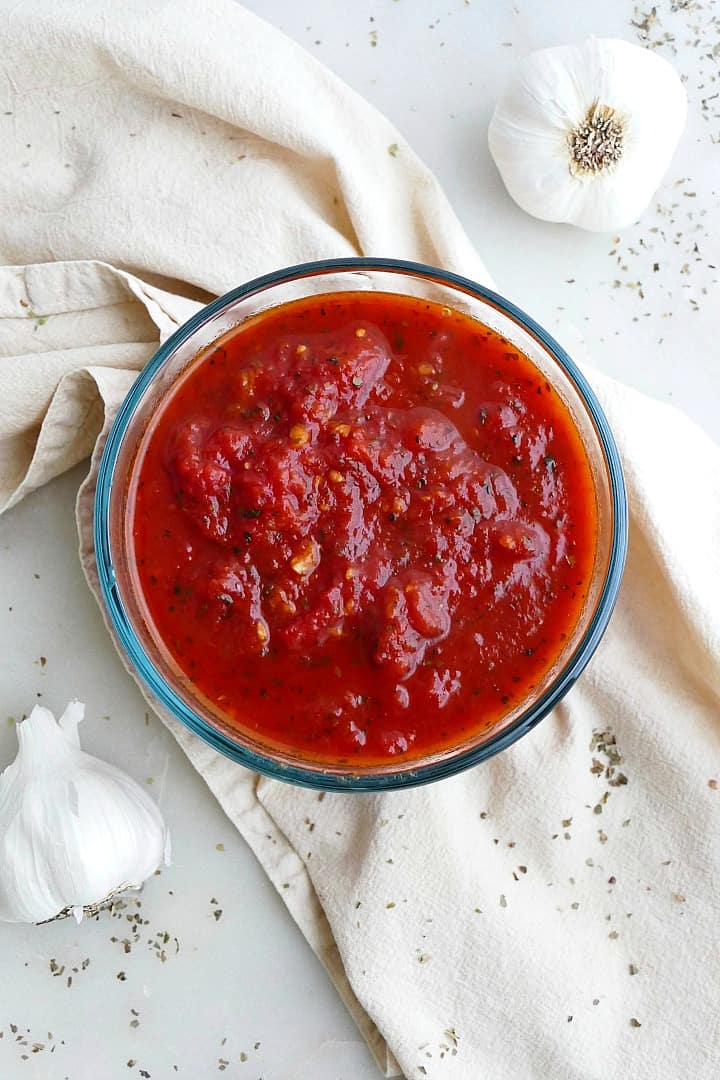
This post may contain affiliate links. For more information, see my affiliate disclosure.
See that can of San Marzano tomatoes in the back of your pantry? (It’s probably Cento brand, let’s be honest.) It’s about to transform into the most balling, delicious, and EASY marinara sauce.
My mom is 100% Italian, so making a good Italian red sauce from scratch should basically be in my genes, right? Not to toot my own horn, but after experimenting with this San Marzano Tomato Sauce, I think that’s true.
This delicious recipe is super flavorful, and that’s primarily because of the tomatoes. But why is that? Are San Marzano tomatoes really better than other types?
YES. San Marzano tomatoes are the BEST kind to use for marinara sauce. They’re sweeter and are known for having low acidity, few seeds, and skin that you can easily remove.
If it was summer and I still had my incredibly fruitful San Marzano tomato plants in the garden, I’d probably use fresh tomatoes to make this recipe. But even then, there would be nothing wrong with using the canned kind. In fact, canned tomatoes are delicious, shelf-stable, and highly nutritious.

Are canned tomatoes better than fresh?
All types of tomatoes are rich in potassium, vitamins A and C, fiber, and several beneficial plant compounds. However, canned tomatoes are actually higher in the antioxidant lycopene.
In the body, lycopene may exert a number of positive effects on the vascular system, including helping to lower blood pressure and prevent the build-up of plaque in arteries.
This is because food processing may break down cell walls and improve the availability of lycopene in the body. While more research is needed, existing studies highlight that canned tomatoes are at least as nutritious as fresh (if not more nutritious).
How to Make San Marzano Tomato Sauce
- Cook minced garlic in a little olive oil in a saucepan over low-medium heat. It can burn easily, so be sure to stir it with a wooden spoon.
- Add a can of whole peeled tomatoes, basil, oregano, and salt. Stir and let the sauce simmer for about a half hour. Use the back of a wooden spoon to crush the tomatoes to help them break down. Taste and add more seasonings as desired.
How to Store and Use Homemade Marinara Sauce
- You can use this sauce right away or store it in a glass jar in the fridge for up to a week. To freeze San Marzano Tomato Sauce, let it come to room temperature then transfer to freezer-safe containers (one big container or a few smaller ones if you want to freeze it in individual portions). Freeze for three months or longer.
- Thaw frozen sauce in the fridge in a bowl of water before use. You can also put it in a saucepan straight from the freezer, but I recommend heating it on low to avoid scorching. Keep a careful eye. If it’s coming straight from the fridge, reheat sauce in a saucepan over medium-low heat, stirring frequently.
- You can use this tomato sauce as the base for homemade pizza. If you don’t have pizza dough, use pita bread or even just a slice of regular bread. And of course, this recipe tastes delicious smothered over pasta with locatelli cheese or freshly grated parmesan! To make a complete meal, cook some spinach with garlic in a skillet and add a can of white beans. (Thanks to my mom for that idea!)
- If you’re sick of eating pasta at the moment, try to switch up the shapes you get. Orecchiette, orzo, and fusilli are less popular varieties, and they can add a fun new shape to your meals!
For other homemade sauce recipes, check out the Hidden Veg Pasta Sauce, Roasted Cherry Tomato Sauce with Fresh Herbs, and Roasted Red Pepper Pasta Sauce while you’re here.
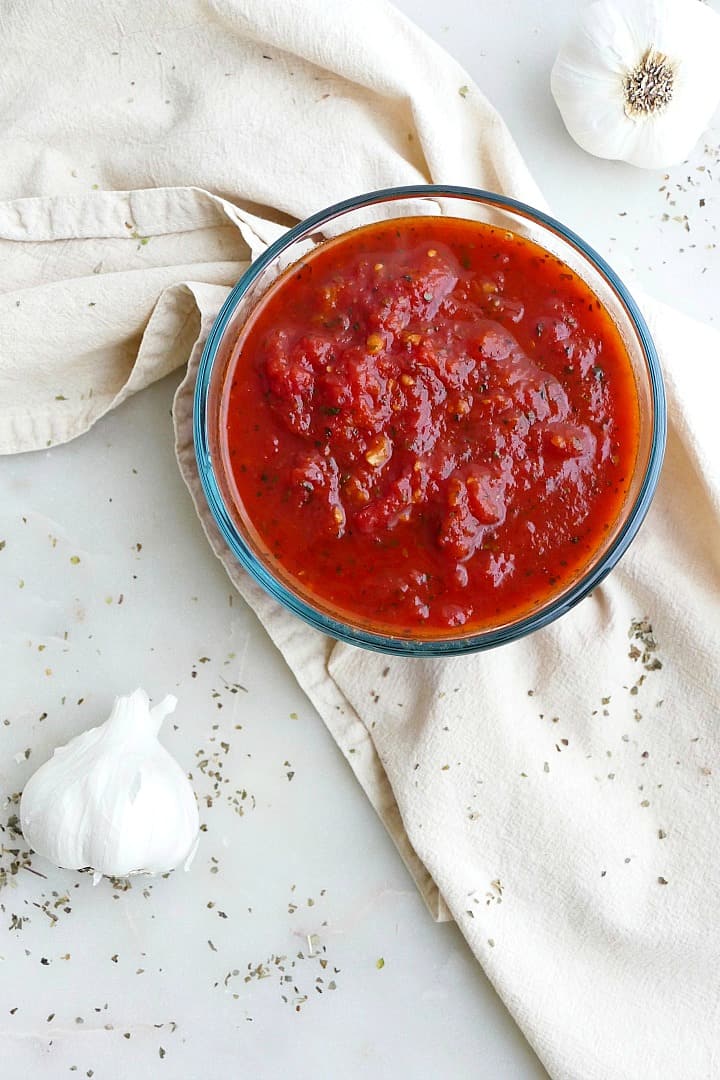
Healthy Side Dishes for Pasta Dinner
Want a vegetable side for your next pasta night? I love the Lemony Fennel Lentil Salad with Parsley, Roasted Frozen Broccoli, Kale Radicchio Salad, Tarragon Roasted Summer Vegetables, and Whole Roasted Onions.
I’d love to hear how you like this recipe! Rate/review using the stars on the recipe card or in the comments, and follow the Veg World on YouTube, Instagram, Facebook, and Pinterest. Looking for something totally different? Browse the recipe library.
📖 Recipe
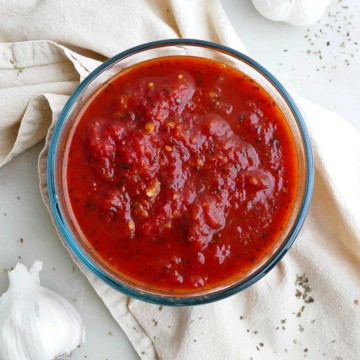
Canned San Marzano Tomato Sauce
Ingredients
- 1 tablespoon olive oil
- 6 cloves garlic - minced
- 1 28 ounce can whole peeled San Marzano tomatoes - recommend Cento brand
- 2 teaspoon dried basil
- 1 teaspoon dried oregano
- Salt - to taste
Instructions
- Heat the olive oil in a non-reactive saucepan (one with a stainless steel finish) over medium-low heat. Cook the garlic in the oil for few minutes, stirring frequently to avoid burning. Pour in the canned tomatoes with their juices, and add the basil and oregano.
- Reduce heat to low, and let the sauce simmer for about 30 minutes. Stir occasionally, using a wooden spoon to break up the tomatoes as they cook. Taste and add salt (or other seasonings) as desired. Remove from heat, and serve immediately or store in the fridge or freezer.
Notes
- Store in a glass jar in the fridge for up to a week. Reheat in a saucepan over medium-low heat, stirring frequently to prevent scorching.
- To freeze, let the sauce come to room temperature before transferring to freezer-safe containers. Store for three months or longer. Let the frozen sauce thaw in a bowl of water in the fridge before reheating. If you’re short on time, you can reheat from frozen but do this over low heat, stir frequently, and keep a close eye to prevent scorching.
- You can easily double or triple this recipe to make sauce in bulk.
- Use as the base for homemade pizza or on top of pasta.
Nutrition
Enjoy! – Lizzie

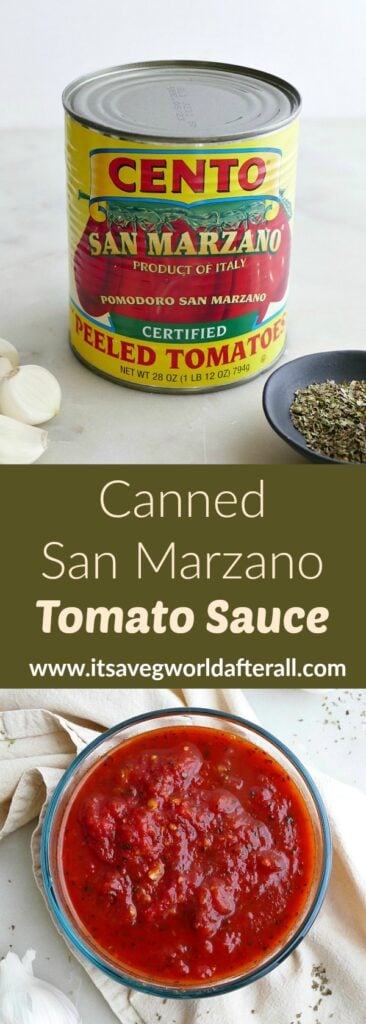
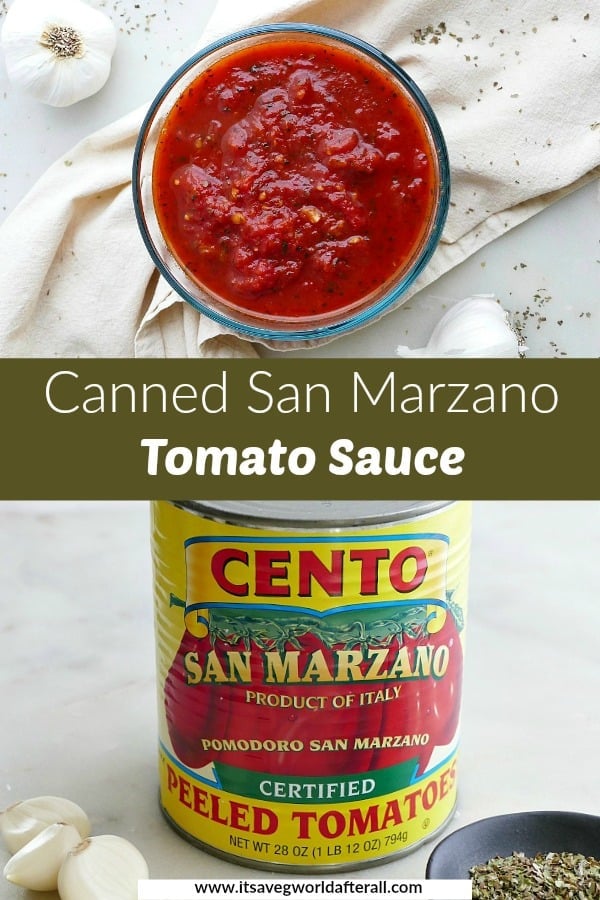
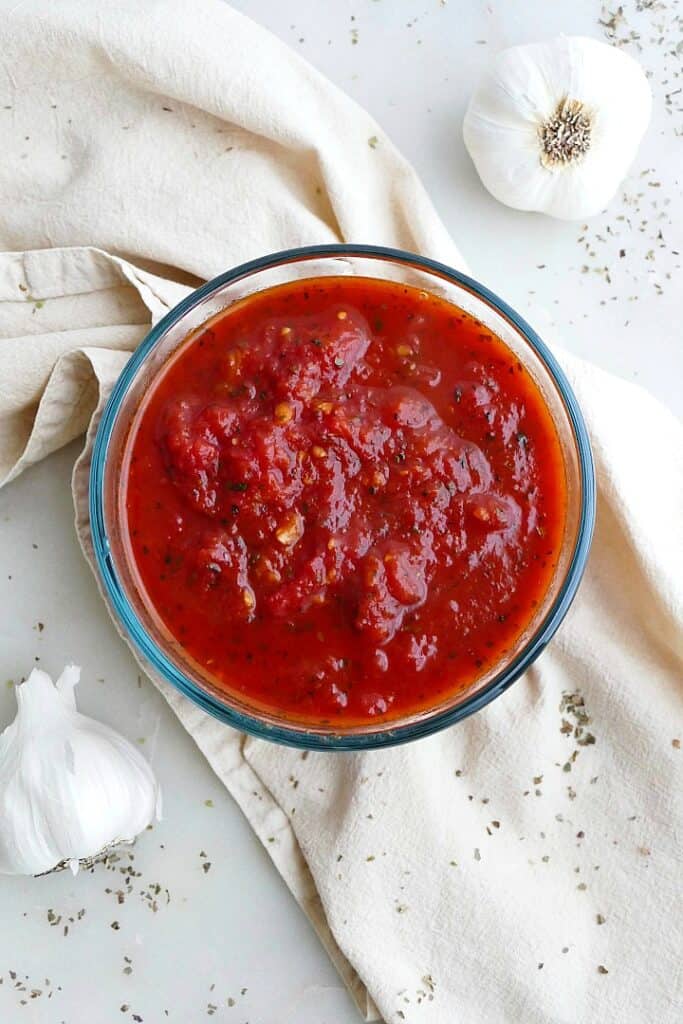

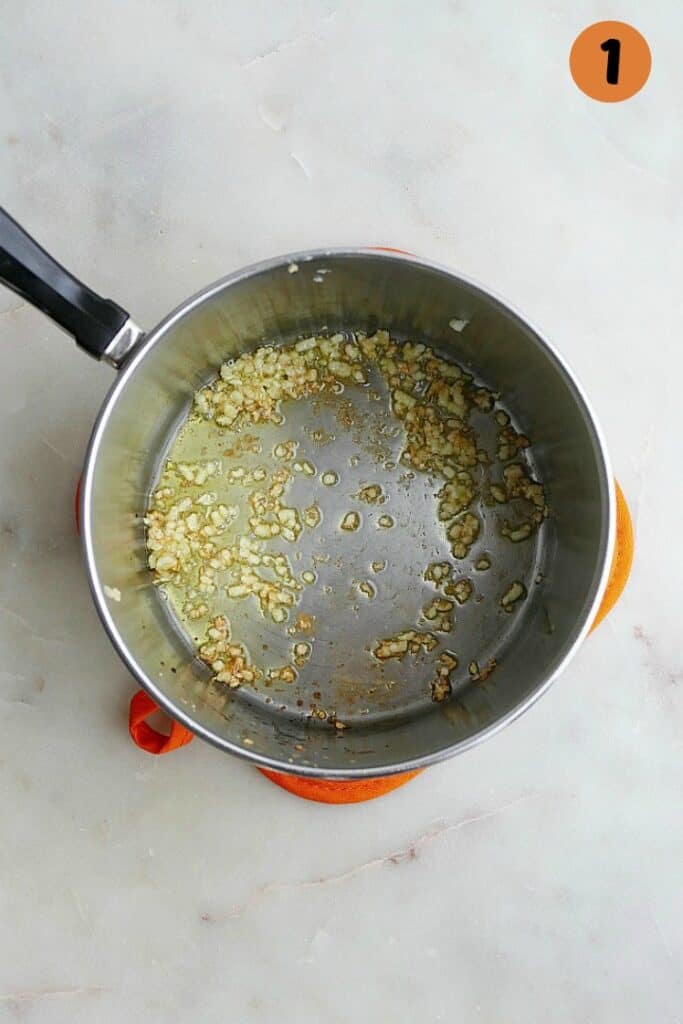

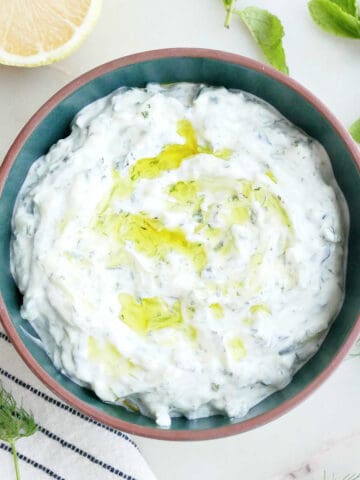
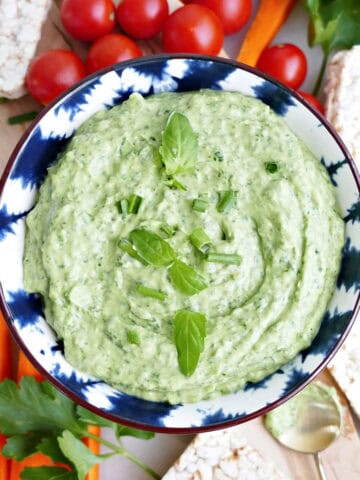

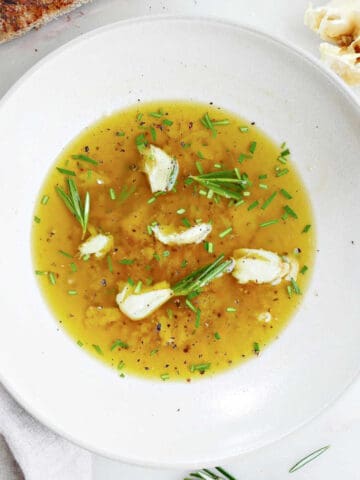
Miranda K
Can you can this recipe?
Lizzie Streit, MS, RDN
I imagine you could but I do not know the details and required precautions to do so.
Margaret
I need low sugar & salt ideas thx Margaret
Lizzie Streit, MS, RDN
Hi Margaret, this recipe is low in both sugar and salt, however the amount of sodium depends on how much salt you add to taste. You can browse an assortment of healthy recipes by clicking the tab labeled “Recipes” here on the site. All recipes have their nutrition information in the recipe card at the bottom of the post, and the amount of sugar and sodium are included there.